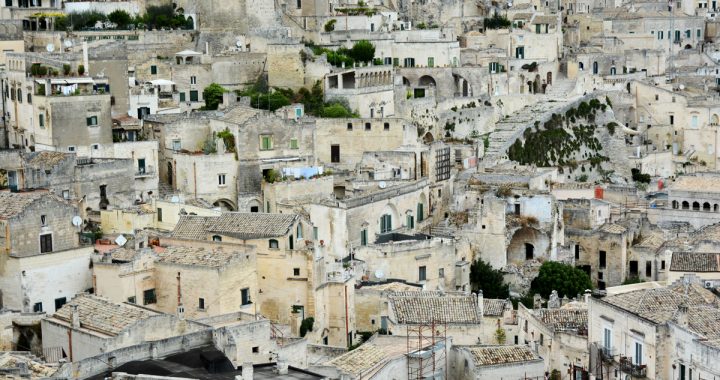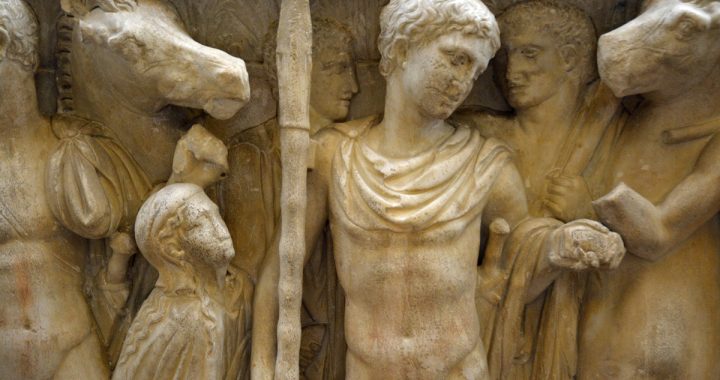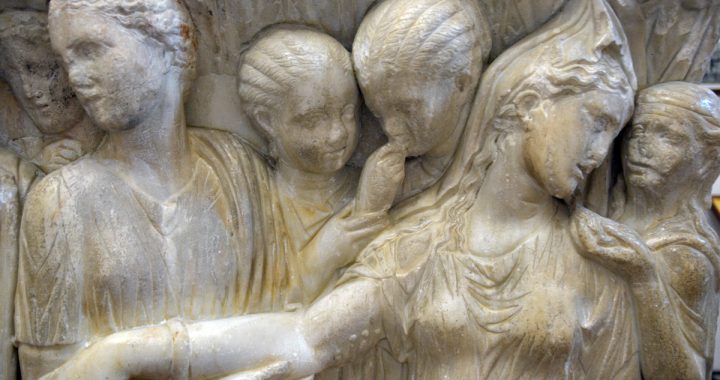In a medieval Norman church, 12th century, in Agrigento, Sicily, there’s a chapel that contains a remarkable ancient work of art known as the Agrigento Sarcophagus. For the 18th century art historian Winkelmann (1717-78) it was one of the ancient world’s most precious treasures. Goethe, who saw it in his Italian Journeys of the 1780s, also thought it a masterpiece, though believed it to be classical Greek rather than early Roman. Most now date it from the first or second century CE, yet clearly imitating a Greek style. For centuries it was in the cathedral of Agrigento, according to different travelers being used as a baptismal font at one time and the church’s altar in another (it had this last function well into the 20th century). The front depicts Hippolytus preparing to go on a hunt, while the small nurse, just to the left, approaches him to divulge Phaedra’s desire for him (see below). He hold the reins of the horses, a hunting dog is in the lower right.








